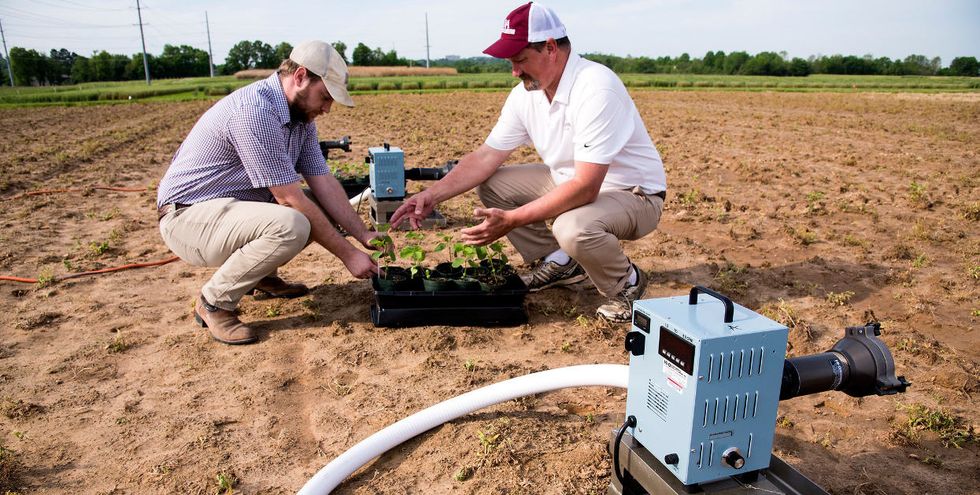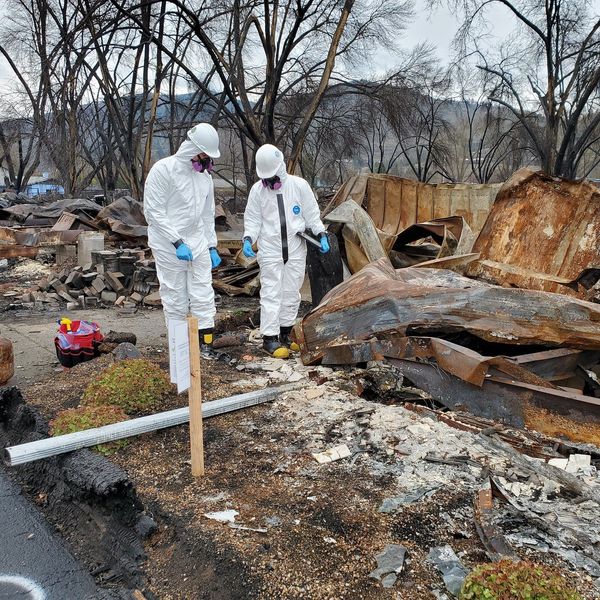I have followed major pesticide-related court actions for about 40 years.
The June 3, 2020, decision by the 9th Circuit Court of Appeals overruling federal registrations allowing "over-the-top" uses of dicamba on genetically modified soybeans and cotton stands out in three ways.
First, the court's 56-page order conveys a remarkable grasp of the issue and the science.
Second, the three-judge panel based its decision in large part on key provisions in our national pesticide law that have been, for the most part, present but unaccounted for—adverse social and economic impacts on farmers and rural neighbors, and the anti-competitive impacts of the technology.
Third, the court's order slammed the door on legal dicamba use immediately, despite the fact that farmers across the country were just entering the heart of the dicamba over-the-top spray season on genetically modified soybeans and cotton. Over-the-top refers to herbicide applications made after a crop is growing (also referred to as "post-emergent" applications).
In nearly all prior cases revoking federal registrations, the Environmental Protection Agency and courts have left enough wiggle room in orders to allow farmers to apply "soon to be banned" pesticides in the current growing season, especially if products had already been purchased by farmers.
True to form, late on Monday, June 8, the EPA issued an order cancelling over-the-top dicamba registrations effective as of June 3, the date of the court order.
The same order, however, allows for continued use through July 31 for product already in possession of farmers or commercial applicators.
This provision will, in effect, allow "business as usual" applications of most of the formulated dicamba over-the-top herbicides manufactured for sale and use in crop season 2020.
How we got here
The use of dicamba as an over-the-top herbicide on genetically modified crops has been controversial from day one.
Dicamba is highly volatile. It has a habit of moving off fields after a legal application, blowing downwind, and then falling back to Earth with rain, fog, or changing temperatures. When dicamba lands on susceptible trees, shrubs, and crops, bad things happen. Dicamba causes the equivalent of plant reproductive and developmental defects.
In 2012 a broad-based coalition of agricultural and food industry groups and leaders formed the Save Our Crops Coalition (SOCC). It led a grass-roots effort to compel Monsanto and the EPA to take seriously, and mitigate the risk of off-target dicamba movement onto fields of nearby crops, vines, and trees. The SOCC focused mostly on Monsanto, the company which developed the dicamba-tolerant seeds and manufactures several dicamba herbicides formulated for use on them.
Despite the Coalition's efforts, the EPA approved the new dicamba formulations for use on genetically modified soybeans and cotton in time for the 2017 crop season. As predicted by the Coalition, drift and crop damage problems occurred just about everywhere dicamba-resistant seeds were planted and the new over-the-top formulations were sprayed.
Each year since, the EPA has imposed stricter limits on when and how over-the-top dicamba can be applied, despite warnings from the Coalition, several state regulatory officials, academics, and others that the added restrictions were like putting a band aid on an amputated limb.
Each year problems persisted, and, in many ways, have worsened.
Landing in court
In the fall of 2018, the EPA issued a new, time-limited conditional registration for over-the-top dicamba covering crop years 2019 and 2020. Soon after, the National Family Farm Coalition, Center for Food Safety and two other NGOs sued the EPA, seeking to overturn the just-approved conditional registration.
The case has wound through the court system since, culminating in the 9th Circuit Court of Appeals review and ruling earlier this month.
The court revoked the registration for three dicamba-based herbicides for use over-the-top on genetically modified soybeans, essentially banning further sales and use of the products.
An excerpt from the ruling explains why the judges issued such a strong order:
"The EPA substantially understated three risks that it acknowledged... the EPA refused to estimate the amount of dicamba damage, characterizing such damage as "potential" and "alleged," when record evidence showed that dicamba had caused substantial and undisputed damage."
Herein lies where and how EPA violated our national pesticide law. In order to grant a conditional registration, the EPA must determine, based on the weight of the evidence, that approval of over-the-top dicamba applications will not trigger any new or more serious "adverse impacts on man or the environment."
But the lower-court record in this case showed clearly that such applications would trigger more serious problems, and also that EPA knew they would, leading the court to vacate the registrations.
Whether the appeal court's action will be honored and enforced remains to be seen. Before the ink was dry on the court's order, several State Departments of Agriculture issued statements to the grower community, pesticide retailers, and applicators that further use was just fine, unless and until EPA orders a full stop.
The Texas Ag Commissioner, Sid Miller, left little to the imagination in his official statement:
"For the farmers in Texas, I want to be clear: I've got your back. Dicamba is still available for use in Texas as currently labeled and will continue to be so until someone tells us to stop."
That "full stop" won't happen until July 31, so over-the-top dicamba use will continue through the traditional, post-emergence spray season.

Dr. Jason Norsworthy, Division of Agriculture weed scientist, right, and graduate student Michael Houston examine soybeans used as biodetectors in a dicamba volatility study in 2018. (Credit: Ark. Agricultural Experiment Station/flickr)
What comes next
Pesticide retailers and herbicide manufacturers are jockeying to influence what comes next.
It is a safe bet it will be messy, one step forward and two back, or vice versa, depending on your point of view.
A few things are likely. Undeterred by past failures, the EPA will likely find a way later this year, or at least by the third week in January, to say "yes" to grower groups and dicamba manufacturers, by issuing new registrations for slightly modified over-the-top dicamba formulations, coupled with even stricter restrictions.
Problems stemming from a given, over-the-top dicamba application during crop year 2020 will be as bad or worse than last year. The extent of use, and weather conditions when the product is applied, will determine how bad the drift and damage problems are this year.
Responses by the EPA, states, and agricultural communities to the appeal court's order will be the pesticide industry's test of whether the rule of law still applies in the world of pesticide regulation.
Steve Smith, the founder and chair of the Save Our Crops Coalition, said this week: " I look for massive sprayings to occur in the next few days, good conditions or not, before the label gets rescinded."
Substantial evidence now supports the view of many academic weed scientists that this "technology package" (dicamba-resistant seeds sprayed with over-the-top formulations) is too hot to handle. Many respected scientists have concluded, and stated publicly, that the technology cannot be managed without accepting significant off-target movement and nearby crop and tree damage, regardless of how careful farmers and applicators are.
In short, the problem is a design flaw in the technology itself, not adherence to strict and complex label rules.
The days of legal over-the-top dicamba applications are likely numbered. As a result, soybean and cotton farmers will shift to other "technology packages."
Unfortunately, some of these are as volatile as dicamba, and kill plants, trees, and vines in much the same way.
With farmers and the herbicide industry running out of effective herbicides, three things will happen.
- Farmers will spray more herbicides more often and at generally higher rates, pay more for herbicides, and struggle to respond to increasingly erratic weed control.
- The adverse environmental and public health impacts of herbicide use in the Midwest will become impossible to deny and harder for society to accept. A just-published paper by a team of National Cancer Institute scientists reports a strong association of dicamba use and liver tumors among farmers.
- And new ways to manage weeds will have to emerge that rely more on management and proven, cultural practices, and less on herbicides.
In the interim, expect a wild ride that could leave a lot of collateral damage in its wake if the status quo persists.
Charles Benbrook has served as an expert witness in several major pesticide and food-labeling related cases in which government regulatory policy has played a central role.
His views do not necessarily represent those of EHN, The Daily Climate or publisher, Environmental Health Sciences.
Visit his website or contact him at charlesbenbrook@gmail.com
Banner photo: University of Missouri professor Reid Smeda speaks to farmers about about dicamba, 2-4D soybeans in 2014. (Credit: Mizzou CAFNR/flickr)


























